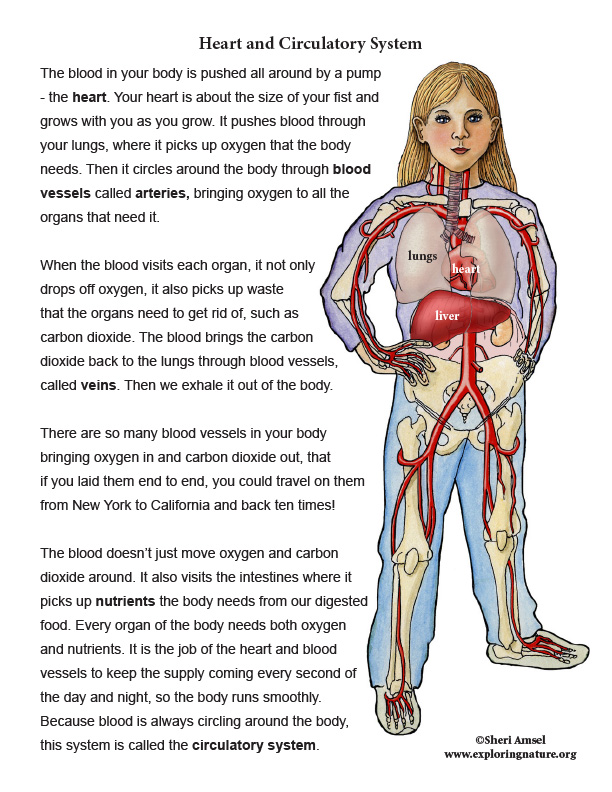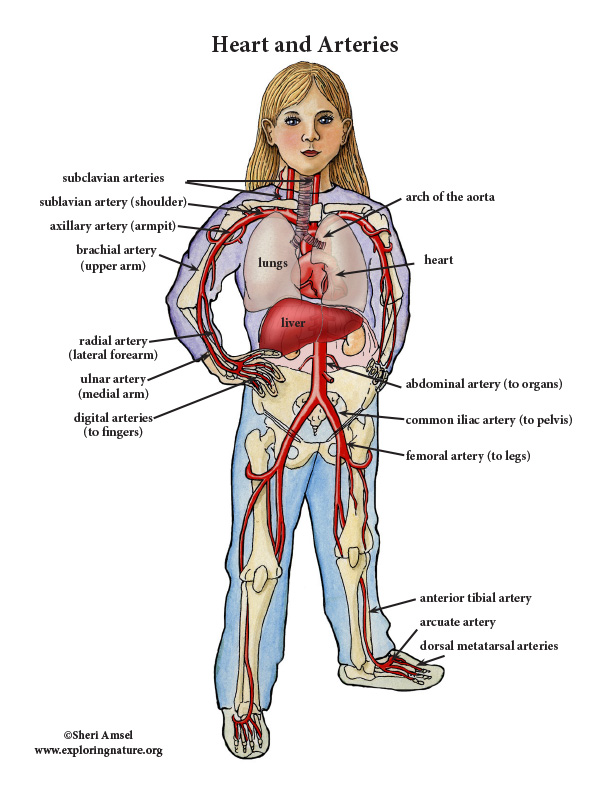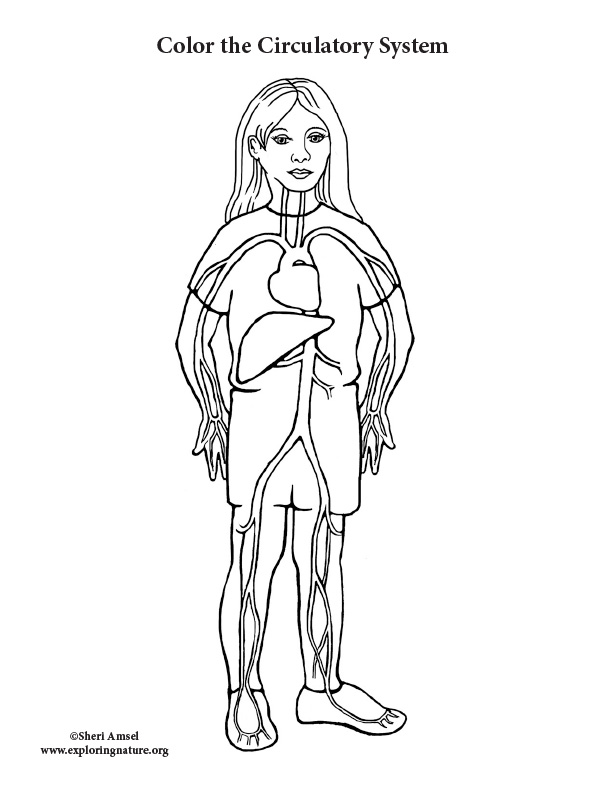

The blood in your body is pushed all around by a pump - the heart. Your heart is about the size of your fist and grows with you as you grow. It pushes blood through your lungs, where it picks up oxygen that the body needs. Then it circles around the body through blood vessels called arteries, bringing oxygen to all the organs that need it.
When the blood visits each organ, it not only drops off oxygen, it also picks up waste that the organs need to get rid of, such as carbon dioxide. The blood brings the carbon dioxide back to the lungs through blood vessels, called veins. Then we exhale it out of the body.
There are so many blood vessels in your body bringing oxygen in and carbon dioxide out, that if you laid them end to end, you could travel on them from New York to California and back ten times!
The blood doesn’t just move oxygen and carbon dioxide around. It also visits the intestines where it picks up nutrients the body needs from our digested food. Every organ of the body needs both oxygen and nutrients. It is the job of the heart and blood vessels to keep the supply coming every second of the day and night, so the body runs smoothly. Because blood is always circling around the body, this system is called the circulatory system.





